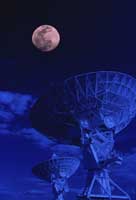Apr 24 2008
Dutch chemist Paul Poodt has developed two attractive alternatives for allowing protein crystals to grow under weightless conditions. If the crystals are grown upside down in a strong magnetic field, fluid flows that disrupt crystal growth are suppressed. Therefore, high-quality proteins no longer need to be grown in space, but can be grown here on earth.

Protein crystals provide vital knowledge for drug development. The production of an effective drug requires knowledge of how biomolecules such as body proteins are constructed. If you want to know how proteins work, you must first of all determine their molecular structure using X-ray diffraction. This requires exceptionally high-quality protein crystals. However, allowing these to grow can be extremely difficult and sometimes even impossible: the presence of gravity gives rise to fluid flows in the crystal solution, which, in turn, disrupt the growth process. Undisturbed growth yields the finest crystals.
In order to prevent fluid flows, the decision is often taken to grow the protein crystals in space on. However, as this is a very expensive and time-consuming undertaking, scientists are looking for methods to create weightlessness on earth. The experiment in Nijmegen is the first in the world to demonstrate that a crystal can grow uniformly in a strong magnetic field.